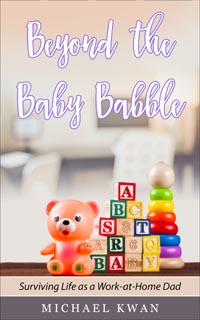You did not create the inequalities and injustices of this world, daughter. You are neither solely nor uniquely responsible to fix them. If there is anything to learn from the story of our ancestry, it is that you should respect and protect yourself; that you should demand not only justice but joy; that you should see, truly see, the vulnerability and creativity and the enduring beauty of others.
Ever since I became a dad to a little girl of our own, practically every story of a father-daughter relationship has hit me right in the feels. And understandably so. That was my expectation when I started reading I’ve Been Meaning to Tell You: A Letter to My Daughter by Canadian author David Chariandy. As it turns out, this book is so much more than that. I can’t recommend it enough.
While there is certainly a parent perspective to how the narrative is presented, I’ve Been Meaning to Tell You is much more about navigating race relations in today’s world. It’s not prescriptive, necessarily. Rather, it’s more about how things were, how things are, and how things could be.
David Chariandy’s background is complicated. His mother is a black woman from Trinidad and his father is South Asian. With this heritage comes a history involving the slave trade and the indentured workers who followed. David himself grew up in the Toronto suburb of Scarborough. And then his wife is Caucasian, coming from a well-to-do family who have lived in Canada for generations.
He says he leads a rather privileged existence today, as an award-winning author and a professor in SFU’s English department. But it hasn’t always been that way.
Myself, I’m not “black” or “brown,” so I can’t speak directly to those experiences. And with a historically significant Chinese population in Vancouver, I’ve never really felt like a total minority. That being said, I have been attacked, bullied, profiled, or treated differently because I’m Asian. And while some Canadians may feel a moral superiority over our neighbors to the south, the fact of the matter is that racism is still a huge problem here; it’s just sometimes more covert.
We are not Muslim. We do not face Islamophobia, the specificity and intensity of that bigotry, just as we are not Indigenous and so do not know that particular legacy of violence and survival. But the fact is that I require little imagination to understand what it feels like to be considered dispensable by the powerful within a country.
What does it mean to be a good Canadian kid? I don’t play hockey (I can’t even skate), I don’t ski or snowboard, and I’m not all that big on Tim Hortons. My parents came to this country with almost nothing and worked hard to provide my brother and I with a comfortable, middle-class upbringing. We’re not unique, in that regard, but we’re also very much not the “powerful” within our country either.
To lead a life where you don’t think about race on a near-daily basis is a privilege. One that is denied to almost every person of color. This is why we need to open up these conversations with programs like Dear White People and even Fresh Off the Boat. These stories need to be told, so that they can be heard by audiences of all backgrounds.
At one point in the book, David Chariandy turns to a passage by accomplished poet, playwright and essayist Zetta Elliott. She perhaps put it most poignantly, so let me leave you with this.
To be a person of colour is to be marked in a peculiar kind of way. You are at once highly visible — obvious, conspicuous, apparent. Yet at the same time you are virtually invisible — unseen, overlooked, transparent. Children, I think, share this strange experience — they are to be seen and not heard, they are spoken of, and spoken for, but not often spoken to. As a child of colour, I experienced this silencing effect while also enduring racial slights and slurs from strangers and family members alike.
I’ve Been Meaning to Tell You is a quick and easy read at about 120 pages. But it’s not really a “light” read insofar as it tackles some very tough, very real issues. I don’t care if you’re black, white, brown, red, yellow, orange, purple or green. Pick it up. And, if they’re old enough, talk to your kids about it.





Trackbacks/Pingbacks